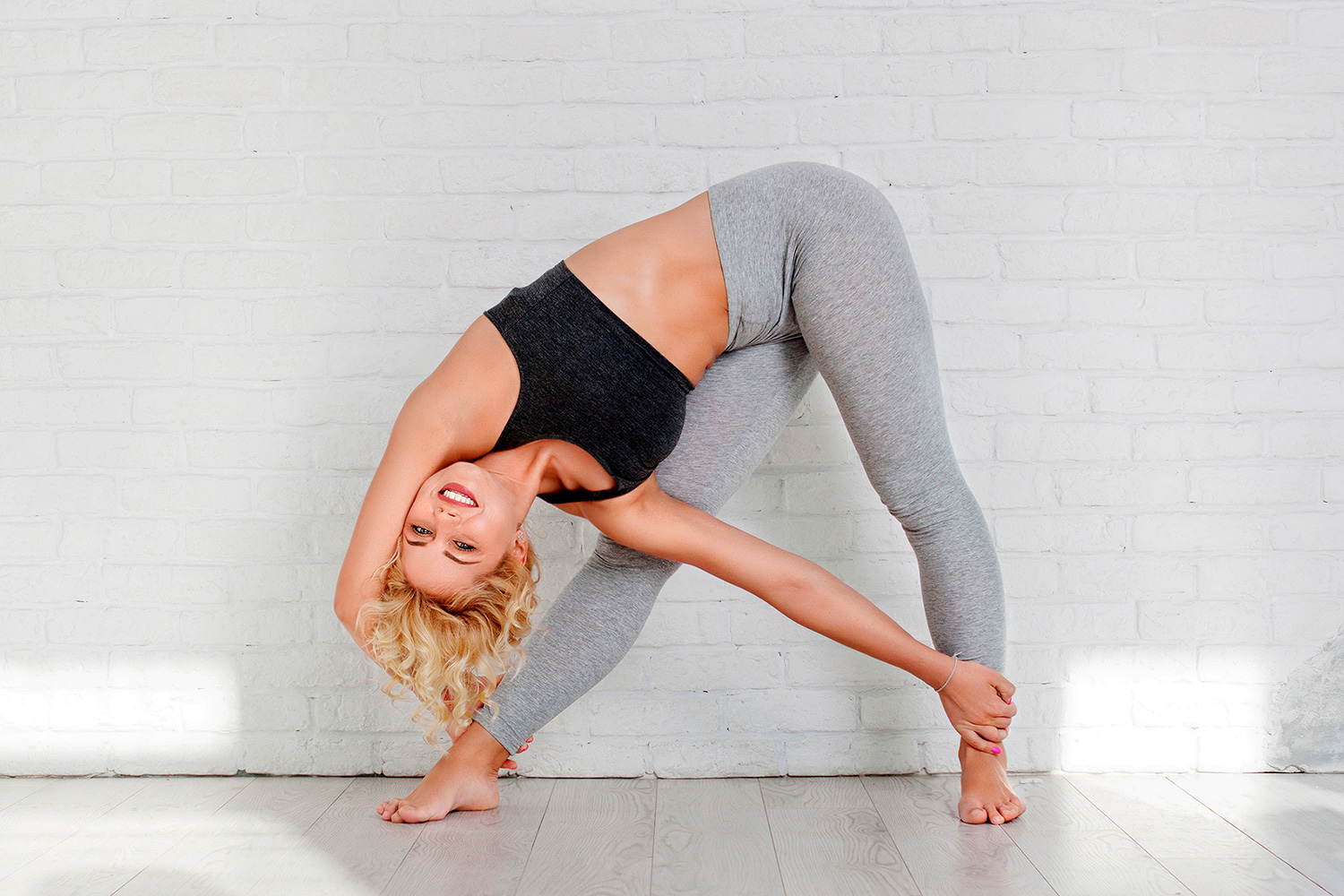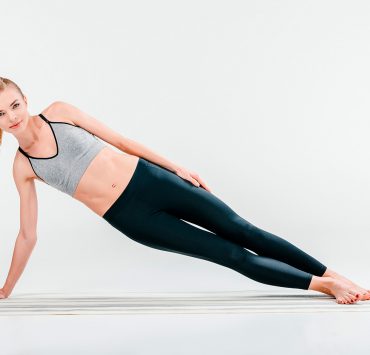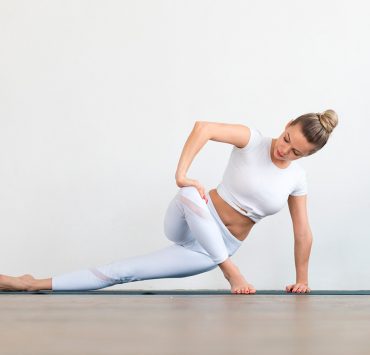
After spending nearly two decades as a relationship therapist, Patricia…
Yoga asana is one of the eight limbs of classical yoga, which emphasizes that the postures should serve as a way to deepen the connection between body and mind. These asanas dance on the line between effort and ease and focus on addressing internal health matters. Therein lies the main difference between classical yoga and modern yoga – The former aims to maintain health by enhancing the function of the organs while the latter centers on developing muscle and flexibility. The twelve postures outlined below are rich in history and valuable for realizing optimal health and well-being. These miraculous poses span far beyond just stretching and strengthening – They work to open the various energy channels within the body while improving spinal flexibility and stimulating the circulatory and immune systems. Along with mindful breathing practices, or pranayama, classical yoga asanas also reduce stress and induce a state of serenity.
Sirsasana
Common Name: Headstand Pose

Benefits:
Reduces stress
Improves focus
Increases blood flow to the head and scalp
Improves digestion
Strengthens arms and shoulders
Activates core stabilizing muscles
Stimulates the lymphatic system
Instructions:
Start on your knees with fingers interlaced, palms open, and forearms down.
Keep your elbows at shoulder-width as you place the top of your head on the yoga mat between your hands.
Straighten the legs and slowly tiptoe the feet closer to your head until the hips are over the shoulders.
Press into the forearms and use your core to lift the feet from the ground.
Bend the knees if necessary, otherwise, straighten the legs towards the ceiling.
Engage the core and hold for thirty seconds or longer.
To come out of the pose, bend the knees first, then hinge at the waist, and slowly lower down.
Sarvangasana
Common Name: Shoulderstand Pose

Benefits:
Good for heart health
Prevents thyroid problems
Soothes headaches
Treats insomnia
Heals hypertension
Relieves stomach ulcers
Soothes constipation
Beneficial for asthma
Brings energy
Instructions:
Using two blankets, come into Plow Pose with your back and shoulders supported by the blankets and your head resting on the floor.
Bend your elbows and draw your hands onto your lower back with fingertips facing upward.
Raise your feet toward the ceiling.
Extend up through the balls of the feet and avoid moving the neck side to side.
Straighten the body by moving your hips forward and your feet backward.
Breathe here for one to three minutes.
Exit the posture by bringing the feet back overhead and come through Plow Pose.
Slowly roll down to the mat.
Halasana
Common Name: Plow Pose

Benefits:
Relieves menopause symptoms
Calms the nervous system
Stimulates the thyroid gland
Massages abdominal organs
Stretches the shoulders and spine
Therapeutic for backaches, headaches, infertility sinusitis, and insomnia
Instructions:
Lie flat on your back with arms by your sides and palms facing down.
Bring your palms to support your back and inhale to lift your legs and hips up towards the ceiling, bringing your torso perpendicular to the floor.
With hips over shoulders, straighten your legs and lower your toes to touch the floor.
Continue to support your back with your hands if the toes don’t reach the floor.
If the feet are resting on the floor, extend the arms and interlace your fingers.
Hold the pose for one to three minutes.
To release, use your hands to support your back as you slowly roll down.
Matsyasana

Common Name: Fish Pose
Benefits:
Stretches the hip flexors
Improves posture
Relieves stress and irritation
Strengthens the upper back and neck
Stimulates the belly and throat
Relieves tension in the upper body
Alleviates asthma symptoms
Instructions:
Lie on your back and come to rest on your elbows with forearms flat on the mat and your upper arms perpendicular to the floor.
Shift your body toward the back of the mat while maintaining the forearm position.
Open across the collarbones by rolling the shoulders back.
Root your palms down into the mat and engage the legs.
Open your throat by dropping the crown of your head back until it makes contact with the floor.
Hold for thirty seconds.
To come out, root down into your forearms to lift your head and release the upper body to the mat.
Paschimottanasana
Common Name: Seated Forward Bend Pose

Benefits:
Calms stress and mild depression
Stretches the hamstrings, spine, and shoulders
Improves digestion
Relieves menstrual discomfort
Stimulates the kidneys, liver, uterus, and ovaries
Soothes anxiety and headaches
Instructions:
Find a comfortable seat on the floor with both legs extended in front of you.
Ground down through the sit bones and engage the legs by drawing the kneecaps up toward the thighs.
Inhale to draw the belly up and in while raising the arms overhead.
Exhale to lengthen the torso over the legs, using the energy of the lower body to deepen the fold.
Hold for one to three minutes.
Bhujangasana
Common Name: Cobra Pose

Benefits:
Increases flexibility
Stretches muscles in the abdomen, shoulders, and chest
Elevates mood
Relieves lower back stiffness
Tones the glutes
Regulates menstruation
Strengthens arms and shoulders
Invigorates the heart
Instructions:
Start lying flat on your belly with palms planted under the shoulders and elbows bent.
Keep your neck neutral and your pelvis anchored to the floor.
Inhale to lift your chest off the floor.
Drop the shoulders back and pull your low ribs away from the floor
Keep your gaze on the floor and your elbows tight to the side body.
Hold for three to five breaths before exhaling back to the floor.
Salabhasana
Common Name: Locust Pose

Benefits:
Stimulates abdominal organs
Improves posture
Relieves stress and tension
Stretches the quadriceps, abdomen, shoulders, and chest
Strengthens the muscles of the back, legs, and arms
Instructions:
Lying on your belly, bring your arms by your sides with palms facing down.
Rest your forehead on the mat and press the tops of your feet down.
Roll the shoulders back to open the chest.
Inhale and lift your upper body off the floor, reaching your arms straight back.
Engage the legs so the knees lift.
Stay here for three to five breaths before exhaling to release down to the floor.
Dhanurasana
Common Name: Bow Pose

Benefits:
Strengthens back muscles
Improves flexibility
Cures constipation
Effective for weight loss
Improves digestion
Improves blood circulation
Instructions:
Lie flat on your belly, keeping feet hip-width and arms down by your sides.
Bend the knees and reach your hands back to grasp the outer edges of the feet.
Inhale, and lift your chest and legs off the ground by pressing the feet into the hands.
Take three to five deep breaths before lowering down on an exhale.
Ardha Matsyendrasana
Common Name: Half Lord of the Fishes Pose

Benefits:
Cleanses the internal organs
Opens the shoulders and neck
Tones the abdominal muscles
Improves digestion
Increases flexibility
Energizes the spine
Instructions:
Start seated with legs straight in front.
Bend your left knee and bring the sole of the foot to the floor outside your right thigh.
Bend your right knee and place the foot near your left glute.
Inhale your right arm straight up beside your right ear.
Exhale and twist your upper body to the left, placing your right elbow on the outside of your left knee and your left palm on the floor behind the sit bones.
Gaze over your left shoulder.
Continue to breathe length and space into the spine for thirty seconds before unwinding and repeating on the other side.
Kakasana
Common Name: Crow Pose

Benefits:
Tones the abdominal muscles
Opens the groin and hip flexors
Builds focus and endurance
Strengthens the arms, wrist, back, and inner thighs
Alleviates back pain and indigestion
Instructions:
Start standing at the head of your mat.
Bend the knees and plant your palms on the floor at shoulder-width.
Engage your core and lift your hips skyward as you start to move the knees towards the triceps.
Make a shelf with the upper arms by bending the elbows.
Look forward and shift your weight into the arms.
Let the feet slowly lift from the floor and pull the heels towards the sit bones.
Hold the posture for thirty seconds or longer before slowly lowering the feet back to the floor.
Padahastasana
Common Name: Hand Under Foot Pose

Benefits:
Improves flexibility
Aids in weight loss
Improves digestion
Releases tension
Ensures health of the knees, thighs, and lower back
Instructions:
Start in a forward fold with both hands on the floor (knees bent if necessary).
Flip your hands so the palms face up and slide them under the feet until the toes meet the wrist joint.
Slowly fold towards the legs as you draw the elbows out to the sides.
Activate the legs to release the lower back and deepen the fold.
Hold for one minute.
Trikonasana
Common Name: Triangle Pose

Benefits:
Relieves stress
Improves digestion
Stimulates abdominal organs
Relieves menopause symptoms
Strengthens thighs, knees, and ankles
Stretches groin, hips, hamstrings, calves, shoulders, chest, and spine
Instructions:
Come to stand at the head of your mat.
Exhale and step the left foot back into a wide stance.
Lift your arms out to the sides so they’re parallel to the floor.
Turn your left foot in slightly and direct your right toes towards the front of the mat.
Exhale as you reach your right fingertips straight over the front leg.
Rest your right hand on your shin, ankle, or a block inside your front foot.
Move your left arm straight up towards the ceiling.
Hold for thirty seconds and repeat on the other side.
Conclusion
There you have it – The twelve classical yoga asanas that create the foundation for many yoga sequences. With routine practice, one can improve their overall well-being and assist in the prevention of certain diseases. Over time, the postures become a sort of moving meditation that requires equal parts mental and physical exertion.
What's Your Reaction?
After spending nearly two decades as a relationship therapist, Patricia journeyed down the path of writing as a vehicle for sharing her wisdom. Her work reflects a sincere interest in readers’ wellbeing and is abundant with helpful advice and fascinating insight.














